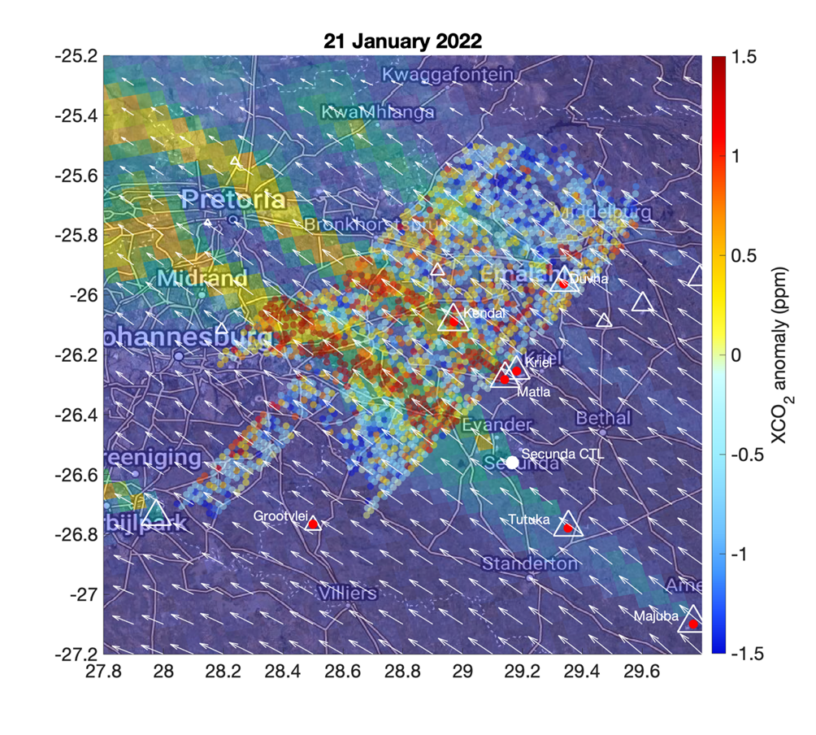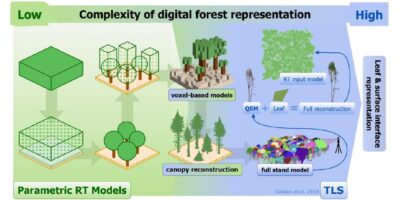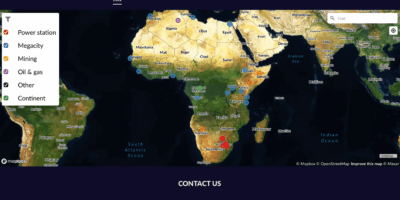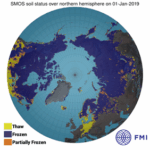A team of researchers estimated the carbon dioxide (CO2) emissions from coal-fired power plants and other major anthropogenic point sources in the South African Highveld region using space-based data. The results indicate that the CO2 emissions can be obtained also in challenging cases where the plumes from multiple sources overlap.
The new publication characterizes CO2 emissions using data from NASA’s Orbiting Carbon Observatory-3 (OCO-3) and European Copernicus Sentinel-5P/TROPOMI.
The article analyses the emissions of six power stations (Kendal, Kriel, Matla, Majuba, Tutuka and Grootvlei) and the largest single emitter of greenhouse gas in the world, Secunda CTL synthetic fuel plant. The annual CO₂ emissions of the Secunda CTL exceed the emissions of several European countries, including Finland, Norway, and Portugal.
Overall, the space-based emission estimates are in good agreement with the emission inventories. Thus, satellite observations can be used for CO2 emission estimation and are particularly useful when no other information is available.
Orbiting Carbon Observatory-3 mission operates on the International Space Station (ISS). To support the quantification and monitoring of anthropogenic CO₂ emissions, OCO-3 incorporates a new key capability that provides observations in Snapshot Area Maps (SAMs), providing contiguous images over regions as large as 80 km by 80 km in two minutes. Altogether the article analyzes six OCO-3 SAMs jointly with Sentinel-5P/TROPOMI nitrogen dioxide (NO2) columns.
The new article is a continuation of the previous work where the authors studied the emissions and NOx-to-CO₂ emission ratio of the isolated Matimba power station. The article extends the method to challenging cases where CO₂ plumes from multiple sources overlap.
The applicability of similar emission estimation approaches for future satellite missions such as the Copernicus Carbon Dioxide Monitoring mission CO2M are discussed. CO2M is Copernicus Sentinel Expansion missions and will focus on carbon dioxide released into the atmosphere specifically through human activity.
The research was carried out at FMI-SPACE together with colleagues from USRA, Colorado State University and Caltech/JPL. The Finnish part of the research was supported by the European Space Agency (DACES), Academy of Finland (CitySpot, CoE inverse and ACCC) and EU-H2020 CoCO2.
More information
Dr. Janne Hakkarainen, Finnish Meteorological Institute, janne.hakkarainen@fmi.fi
The full publication by Hakkarainen and co-authors can be found at the following link: https://doi.org/10.1088/1748-9326/acb837








Leave a Reply
You must be logged in to post a comment.